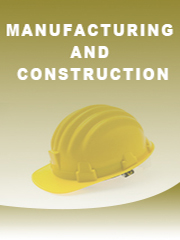Report overview
An active magnetic bearing works on the principle of electromagnetic suspension based on the induction of eddy currents in a rotating conductor. When an electrically conducting material is moving in a magnetic field, a current will be generated in the material that counters the change in the magnetic field (known as Lenz's Law). This generates a current that will result in a magnetic field that is oriented opposite to the one from the magnet. The electrically conducting material is thus acting as a magnetic mirror.
Active bearings have several advantages: they do not suffer from wear, have low friction, and can often accommodate irregularities in the mass distribution automatically, allowing rotors to spin around their centre of mass with very low vibration.
This report aims to provide a comprehensive presentation of the global market for Active Magnetic Bearing, with both quantitative and qualitative analysis, to help readers develop business/growth strategies, assess the market competitive situation, analyze their position in the current marketplace, and make informed business decisions regarding Active Magnetic Bearing. This report contains market size and forecasts of Active Magnetic Bearing in global, including the following market information:
Global Active Magnetic Bearing Market Revenue, 2018-2023, 2024-2029, ($ millions)
Global Active Magnetic Bearing Market Sales, 2018-2023, 2024-2029, (Units)
Global top five Active Magnetic Bearing companies in 2022 (%)
The global Active Magnetic Bearing market was valued at US$ 281.2 million in 2022 and is projected to reach US$ 423.7 million by 2029, at a CAGR of 6.0% during the forecast period. The influence of COVID-19 and the Russia-Ukraine War were considered while estimating market sizes.
Europe is projected to lead the global market during the forecast period. The market in Asia Pacific is expanding at a substantial pace. At the perspective of key manufacturers, SKF, Waukesha Bearings and Schaeffler are the top three players of Global Active Magnetic Bearing market, and their revenue share was 49.44% in 2019. To some extent, it reflects that the market is relatively fragmented.
We surveyed the Active Magnetic Bearing manufacturers, suppliers, distributors and industry experts on this industry, involving the sales, revenue, demand, price change, product type, recent development and plan, industry trends, drivers, challenges, obstacles, and potential risks.
Total Market by Segment:
Global Active Magnetic Bearing Market, by Type, 2018-2023, 2024-2029 ($ Millions) & (Units)
Global Active Magnetic Bearing Market Segment Percentages, by Type, 2022 (%)
Analog Control
Digital Control
Global Active Magnetic Bearing Market, by Application, 2018-2023, 2024-2029 ($ Millions) & (Units)
Global Active Magnetic Bearing Market Segment Percentages, by Application, 2022 (%)
Motors
Blowers
Compressors
Pumps
Generators
Turbines
Turboexpanders
Others
Global Active Magnetic Bearing Market, By Region and Country, 2018-2023, 2024-2029 ($ Millions) & (Units)
Global Active Magnetic Bearing Market Segment Percentages, By Region and Country, 2022 (%)
North America
US
Canada
Mexico
Europe
Germany
France
U.K.
Italy
Russia
Nordic Countries
Benelux
Rest of Europe
Asia
China
Japan
South Korea
Southeast Asia
India
Rest of Asia
South America
Brazil
Argentina
Rest of South America
Middle East & Africa
Turkey
Israel
Saudi Arabia
UAE
Rest of Middle East & Africa
Competitor Analysis
The report also provides analysis of leading market participants including:
Key companies Active Magnetic Bearing revenues in global market, 2018-2023 (Estimated), ($ millions)
Key companies Active Magnetic Bearing revenues share in global market, 2022 (%)
Key companies Active Magnetic Bearing sales in global market, 2018-2023 (Estimated), (Units)
Key companies Active Magnetic Bearing sales share in global market, 2022 (%)
Further, the report presents profiles of competitors in the market, key players include:
SKF
Waukesha Bearings
Schaeffler
Siemens
KEBA Industrial Automation
Zeitlos
Kazancompressormash
MECOS
Synchrony
Calnetix
FG-AMB
Maruwa Electronic
Outline of Major Chapters:
Chapter 1: Introduces the definition of Active Magnetic Bearing, market overview.
Chapter 2: Global Active Magnetic Bearing market size in revenue and volume.
Chapter 3: Detailed analysis of Active Magnetic Bearing manufacturers competitive landscape, price, sales and revenue market share, latest development plan, merger, and acquisition information, etc.
Chapter 4: Provides the analysis of various market segments by type, covering the market size and development potential of each market segment, to help readers find the blue ocean market in different market segments.
Chapter 5: Provides the analysis of various market segments by application, covering the market size and development potential of each market segment, to help readers find the blue ocean market in different downstream markets.
Chapter 6: Sales of Active Magnetic Bearing in regional level and country level. It provides a quantitative analysis of the market size and development potential of each region and its main countries and introduces the market development, future development prospects, market space of each country in the world.
Chapter 7: Provides profiles of key players, introducing the basic situation of the main companies in the market in detail, including product sales, revenue, price, gross margin, product introduction, recent development, etc.
Chapter 8: Global Active Magnetic Bearing capacity by region & country.
Chapter 9: Introduces the market dynamics, latest developments of the market, the driving factors and restrictive factors of the market, the challenges and risks faced by manufacturers in the industry, and the analysis of relevant policies in the industry.
Chapter 10: Analysis of industrial chain, including the upstream and downstream of the industry.
Chapter 11: The main points and conclusions of the report.
